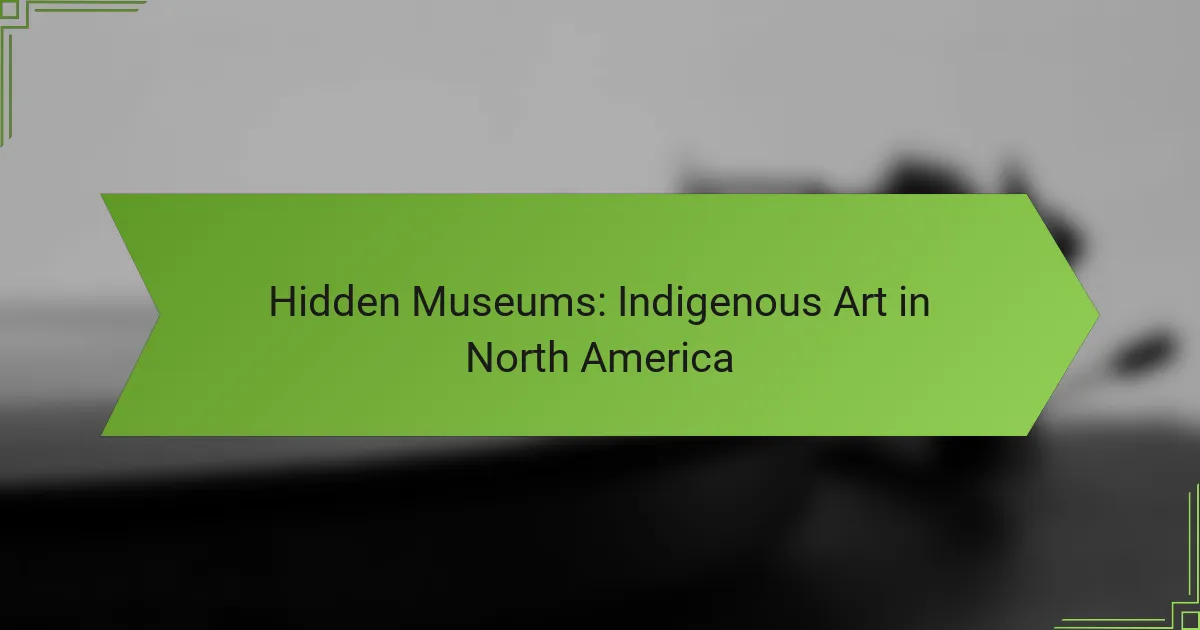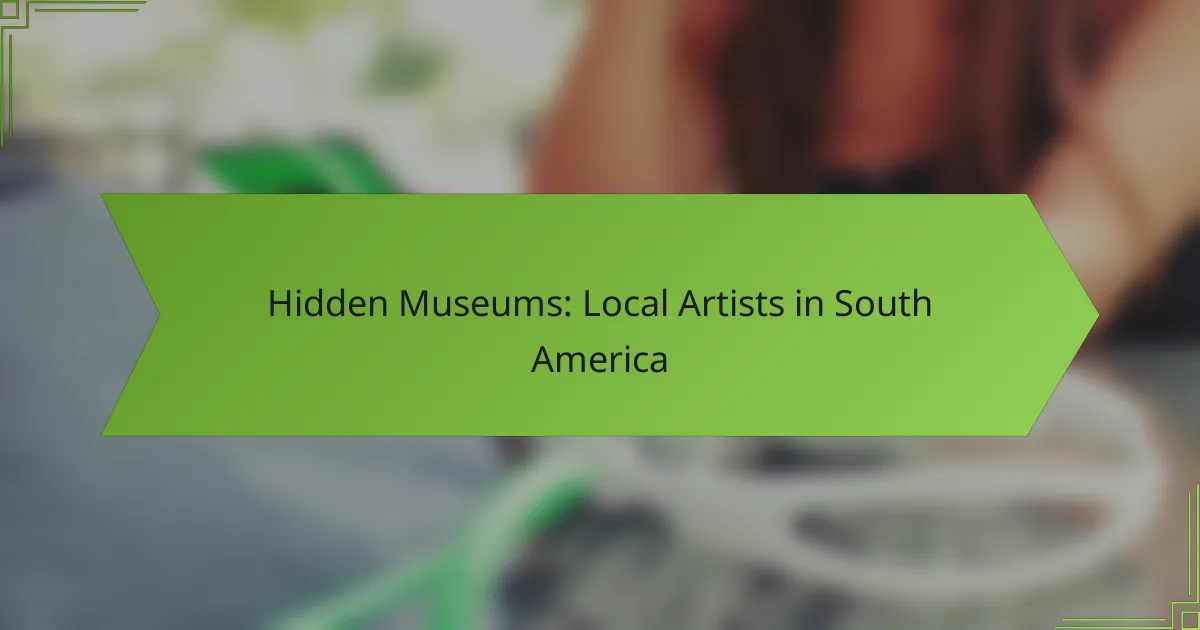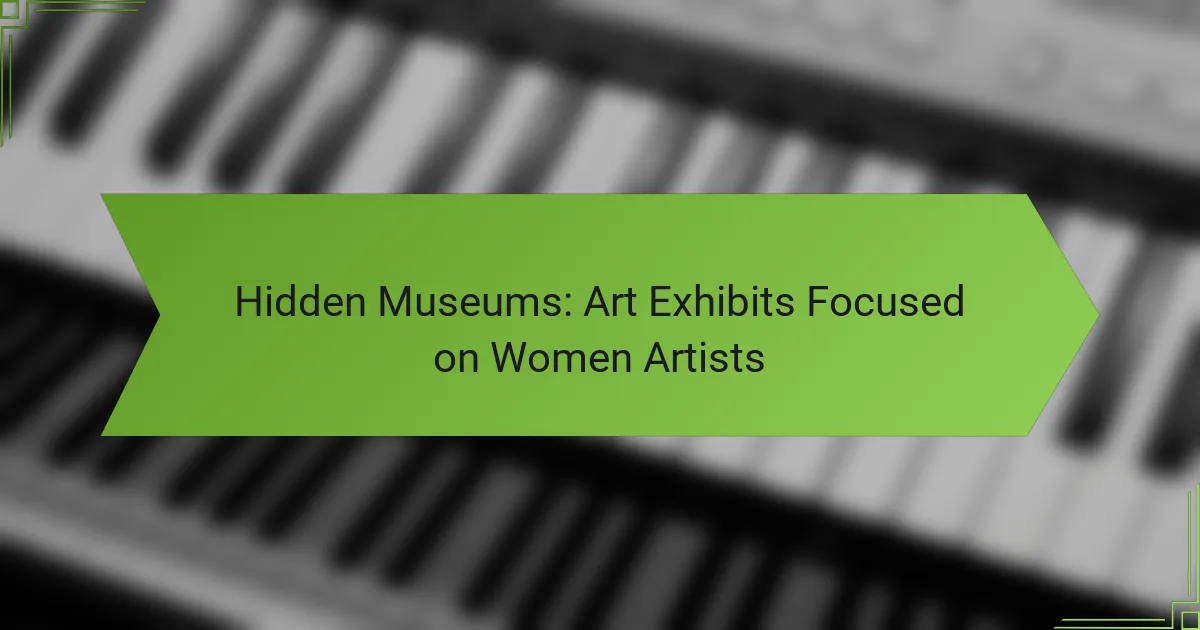Hidden museums of Indigenous art in North America provide a unique glimpse into the rich cultural heritage and artistic expressions of Indigenous peoples. Often privately owned and not widely advertised, these galleries offer valuable insights into Indigenous history, traditions, and contemporary art forms, typically located within Indigenous communities or cultural centers. Accessing these treasures may require some planning, but the experience is deeply enriching and reflective of the diverse cultures and histories they represent.

What Are the Hidden Museums of Indigenous Art in North America?
Hidden museums of Indigenous art in North America are small, often privately owned galleries or collections that showcase the rich cultural heritage and artistic expressions of Indigenous peoples. These museums may not be widely advertised or easily accessible, yet they offer unique insights into Indigenous history, traditions, and contemporary art forms.
List of notable hidden museums
Some notable hidden museums include the Museum of Indian Arts and Culture in Santa Fe, New Mexico, and the Indian Pueblo Cultural Center, also in New Mexico. The Heard Museum in Phoenix, Arizona, while more recognized, features lesser-known exhibits that highlight Indigenous artists.
Other hidden gems include the National Museum of the American Indian’s George Gustav Heye Center in New York City and smaller community-run galleries across various reservations, which often feature local artists and traditional crafts.
Locations of hidden museums
Hidden museums are primarily located in regions with significant Indigenous populations, such as the Southwestern United States, the Pacific Northwest, and parts of Canada. Many are situated near or on reservations, providing a direct connection to the communities they represent.
For example, the Museum of Contemporary Native Arts in Santa Fe is located in a city known for its vibrant arts scene, while smaller museums can be found in rural areas, often requiring visitors to seek them out through local recommendations or Indigenous tourism guides.
Significance of these museums
These hidden museums play a crucial role in preserving and promoting Indigenous culture and art. They provide a platform for Indigenous artists to showcase their work, which often reflects their heritage and contemporary issues faced by their communities.
Moreover, hidden museums foster cultural understanding and appreciation among visitors, allowing for personal connections to Indigenous histories and narratives that are often overlooked in mainstream institutions. They also serve as vital educational resources, offering workshops and programs that engage both Indigenous and non-Indigenous audiences.

How to Access Indigenous Art in Hidden Museums?
Accessing Indigenous art in hidden museums often requires some planning and research, as these venues may not be widely advertised. Many of these museums are located within Indigenous communities or cultural centers, offering unique insights into their art and heritage.
Visiting guidelines
When visiting hidden museums that showcase Indigenous art, it’s essential to respect the cultural significance of the exhibits. Always check the museum’s website or contact them directly for specific visiting hours, as they may vary seasonally or due to community events.
Be mindful of photography policies, as some museums may restrict photography to protect the cultural integrity of the art. Engaging with museum staff or local guides can enhance your understanding and appreciation of the artworks on display.
Online resources for virtual tours
Many hidden museums now offer online resources, including virtual tours, to reach a broader audience. Websites like the Smithsonian National Museum of the American Indian provide interactive experiences that allow you to explore Indigenous art from home.
Additionally, platforms such as Google Arts & Culture feature collections from various Indigenous museums, showcasing artworks and providing context about their significance. These resources are valuable for anyone unable to visit in person.
Booking information
Booking a visit to hidden museums often requires advance reservations, especially for guided tours or special exhibitions. Check the museum’s official website for ticketing options, which may include online purchases or phone reservations.
Some museums may offer free admission, while others might charge a nominal fee, typically ranging from $5 to $20 USD. Be aware of any group discounts or special rates for students and seniors, which can make visits more affordable.
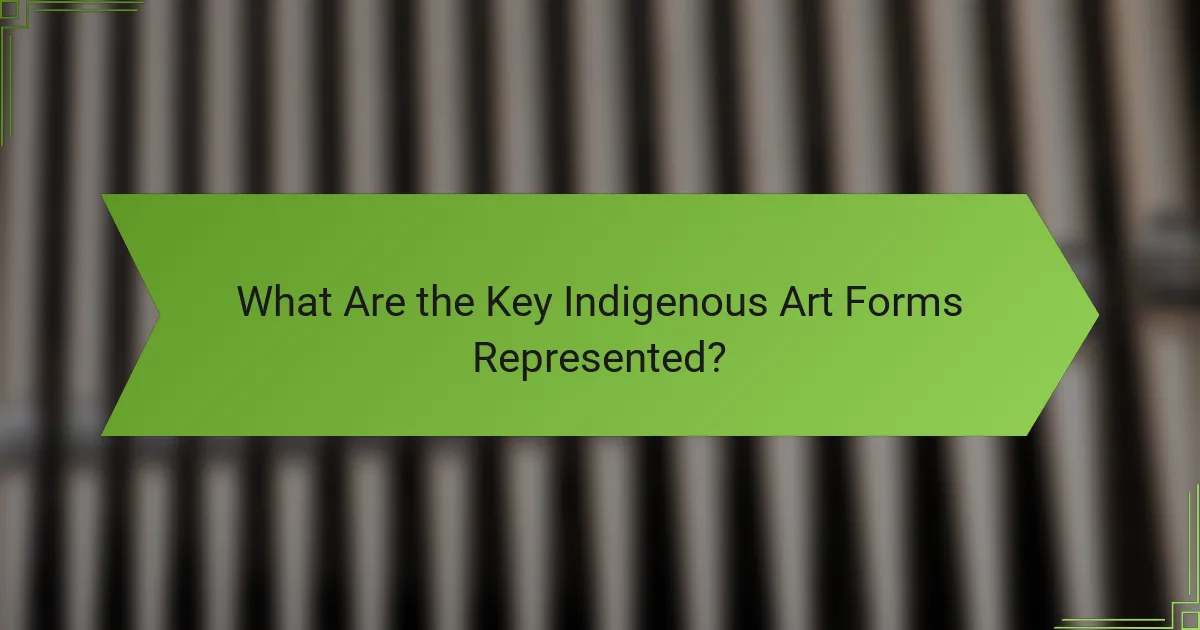
What Are the Key Indigenous Art Forms Represented?
Key Indigenous art forms in North America include traditional crafts, visual arts, and performance art that reflect the diverse cultures and histories of Indigenous peoples. These art forms often incorporate spiritual beliefs, community values, and a deep connection to the land.
Types of art showcased
Indigenous art encompasses a wide variety of types, including pottery, weaving, beadwork, carving, and painting. Each type often carries cultural significance and tells stories of the community’s heritage and traditions.
For example, pottery from the Pueblo tribes is known for its intricate designs and functional beauty, while Northwest Coast totem poles serve as powerful symbols of lineage and identity. Performance art, such as traditional dance and storytelling, also plays a vital role in preserving and sharing Indigenous cultures.
Prominent Indigenous artists
Several Indigenous artists have gained recognition for their contributions to the art world, including Jaune Quick-to-See Smith, an artist known for her mixed-media works that address social issues and cultural identity. Another notable figure is Norval Morrisseau, who is celebrated for his vibrant paintings that depict Indigenous mythology and spirituality.
Emerging artists like Maria Hupfield and Jeffrey Gibson are also making waves, blending contemporary techniques with traditional themes to create thought-provoking pieces that resonate with both Indigenous and non-Indigenous audiences.
Artistic techniques and materials
Indigenous artists utilize a range of techniques and materials that reflect their cultural backgrounds. Traditional methods often include hand-weaving, natural dyeing, and carving from local resources like wood, clay, and stone. These materials not only enhance the aesthetic quality of the art but also connect the work to the land.
For instance, many artists use animal hides and bones in their crafts, while others may incorporate elements like feathers and shells to symbolize their connection to nature. Understanding these techniques can deepen appreciation for the art and the stories it conveys.

What Are the Benefits of Supporting Hidden Museums?
Supporting hidden museums dedicated to Indigenous art offers significant advantages, including the preservation of cultural heritage, economic boosts to local communities, and enhanced educational opportunities. These benefits contribute to a richer understanding and appreciation of Indigenous cultures.
Preservation of culture
Hidden museums play a crucial role in preserving Indigenous cultures by safeguarding traditional art forms and practices. They provide a space for Indigenous artists to showcase their work, ensuring that cultural narratives are maintained and passed down through generations. By supporting these institutions, visitors help sustain the unique identities and histories of Indigenous peoples.
Economic impact on local communities
Hidden museums can significantly impact local economies by attracting tourism and creating jobs. They often rely on local artisans and craftspeople, providing them with a platform to sell their work and gain recognition. This can lead to increased income for families and stimulate local businesses, contributing to a more vibrant community economy.
Educational opportunities
These museums offer valuable educational resources for both locals and visitors. They often host workshops, guided tours, and lectures that promote understanding of Indigenous art and culture. Engaging with these educational programs can foster respect and appreciation for Indigenous traditions, making it essential for schools and community organizations to collaborate with hidden museums for enriching experiences.
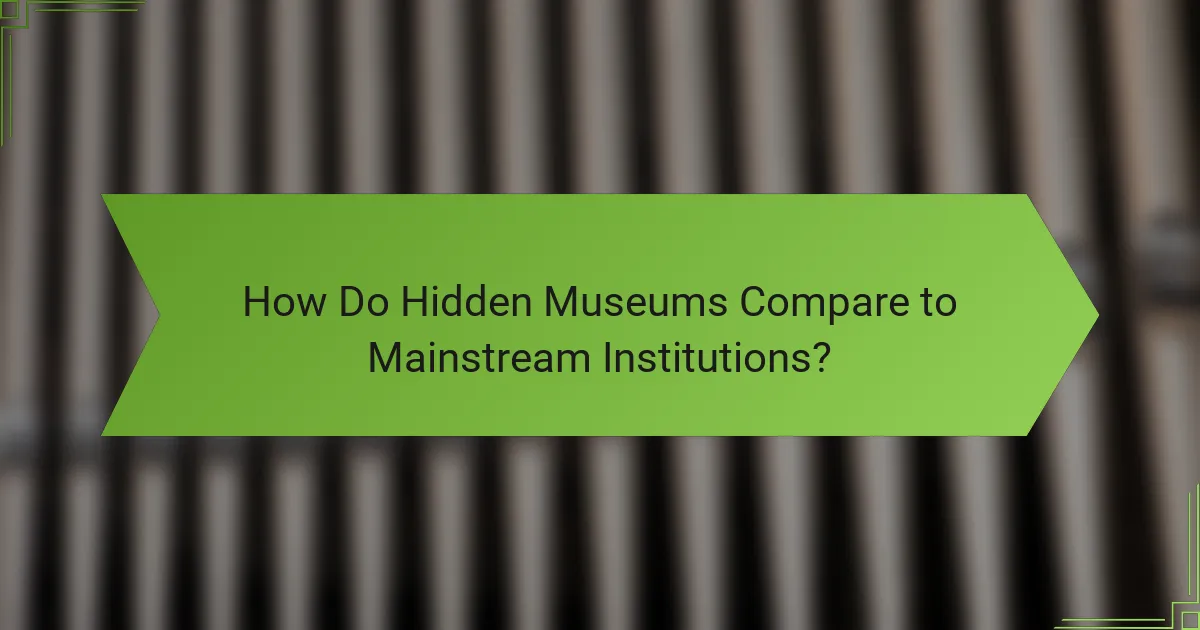
How Do Hidden Museums Compare to Mainstream Institutions?
Hidden museums often focus on specific cultural narratives, particularly Indigenous art, contrasting with mainstream institutions that cover broader topics. These smaller venues typically emphasize community engagement and unique storytelling, providing a different perspective on art and history.
Differences in focus and curation
Hidden museums prioritize Indigenous art and culture, showcasing works that may not fit within the mainstream narrative. Their curation often reflects the voices and stories of local communities, offering a more intimate and authentic experience. In contrast, mainstream institutions tend to present a wider array of art styles and historical contexts, sometimes overlooking specific cultural nuances.
For example, a hidden museum might feature a rotating exhibit of contemporary Indigenous artists, while a mainstream museum could focus on a broader survey of North American art, diluting the specific cultural significance of individual pieces.
Visitor experience comparison
Visitors to hidden museums often enjoy a more personalized experience, with opportunities for direct interaction with artists and community members. This can lead to deeper understanding and appreciation of the art on display. In contrast, mainstream institutions may offer a more formal experience, with guided tours and structured programming that can feel less personal.
Additionally, hidden museums might host workshops or events that encourage visitor participation, fostering a sense of community and connection that is less common in larger institutions.
Funding and support structures
Hidden museums typically rely on local grants, community donations, and fundraising events to sustain their operations. This grassroots approach can create a strong sense of ownership among community members but may limit financial resources compared to mainstream institutions, which often benefit from larger endowments and corporate sponsorships.
As a result, hidden museums may face challenges in maintaining their facilities and programs, while mainstream institutions usually have more stable funding sources, allowing for expansive exhibitions and outreach initiatives.
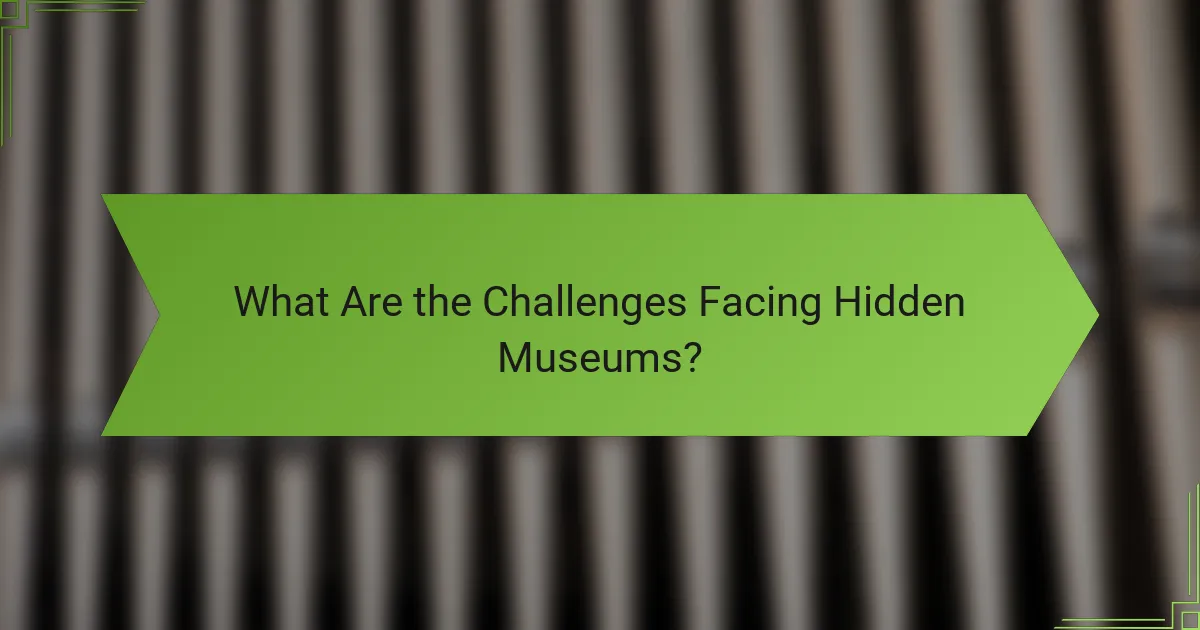
What Are the Challenges Facing Hidden Museums?
Hidden museums, particularly those showcasing Indigenous art in North America, face several significant challenges. These include limited funding, resource constraints, and a lack of visibility, which hinder their ability to thrive and effectively promote Indigenous culture.
Funding and resource limitations
Funding and resource limitations are critical challenges for hidden museums. Many of these institutions rely on grants, donations, and community support, which can be inconsistent and insufficient to cover operational costs. This often results in reduced programming and outreach efforts.
To navigate funding challenges, hidden museums can explore partnerships with local businesses, educational institutions, and cultural organizations. Collaborative initiatives can help pool resources and create more robust funding proposals, increasing the chances of securing financial support.
Additionally, museums should consider diversifying their revenue streams. This could include hosting workshops, selling merchandise, or offering membership programs to engage the community and generate income.
